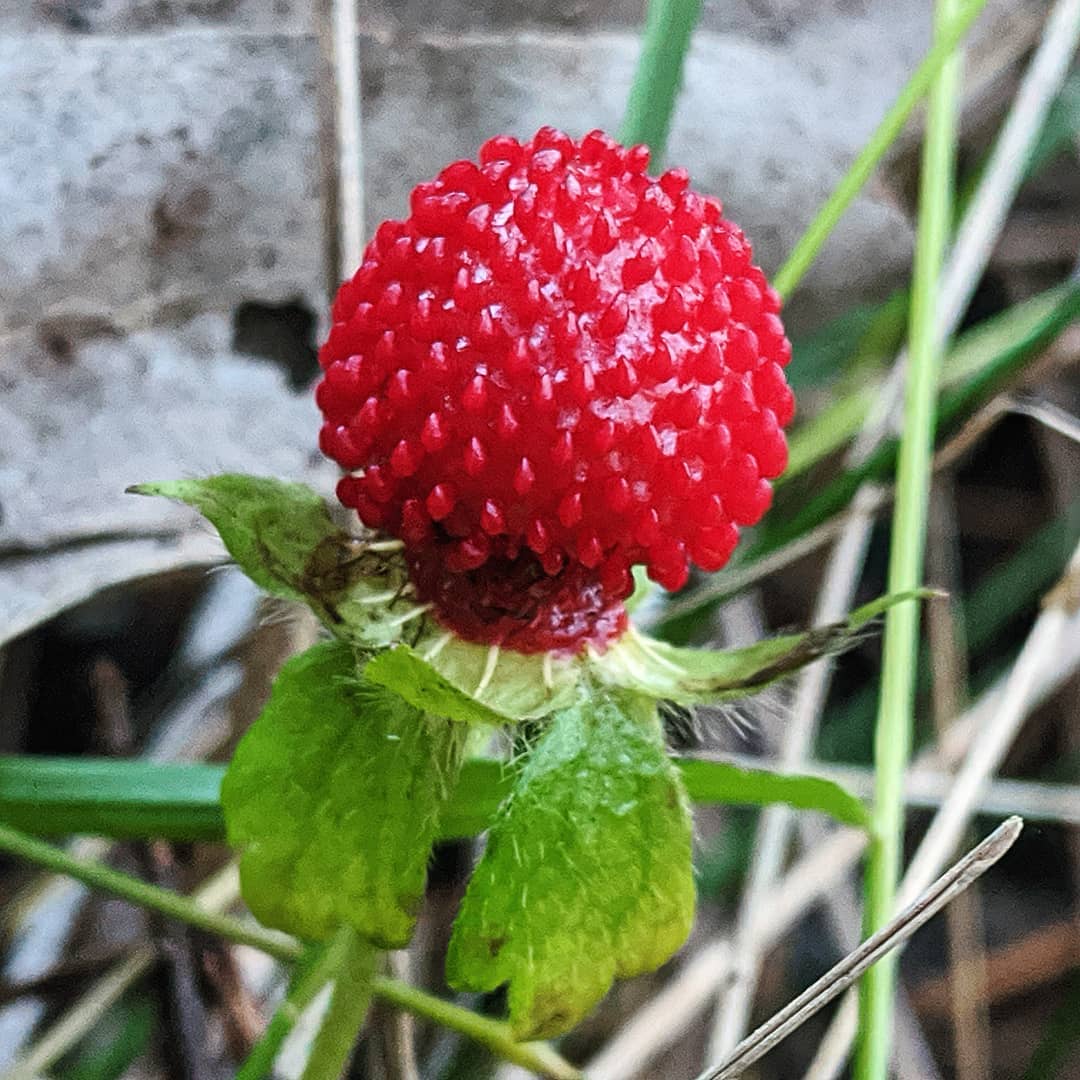False Strawberry (Potentilla indica), one of a number of species in a Rose-family genus adopted into herbal medicine and ornamental use.
Native to monsoon Asia, Loudon recorded it (under the synonym fragiformis) as introduced to Britain from a Southern European source c. 1800. A Weekly Times column, summarising English garden mags for its Melbourne readership in 1881, included a brief on False Strawberry, noting that it was ‘somewhat remarkable that so striking a plant should have been kept in the background, and scarcely known outside botanical collections.’ Reporting that the species was now grown ‘by the thousand’ at the Royal Horticultural Society Gardens at Chiswick, west of London, the column concluded ‘judging by the quantity at Chiswick, it will soon become widely distributed.’
Sent from Europe (where it has also naturalised) through British mercantile networks, it became extensively established across North America and in select areas of the Southern Hemisphere.
False Strawberry was recorded under cultivation in 1919 at Mitta Mitta in Victoria (east of Bright). The first naturalised collection was made in 1931 at Eumundi QLD, where the plant was said to be growing wild in creeks. A second nearby collection in 1937 carries notes recording that it ‘came up near the stable, and may have been brought here in chaff. I have not seen it about here before.’
Back in Victoria, a 1937 column on wild berries reported the species growing wild at Warburton: “at first glance [he] thought it was a yellow buttercup; then he saw the scarlet strawberry fruits. A plant which he kindly sent to me is flourishing now in a fern basket.’ A formal collection was made there in 1938.
The species is still found in this state principally along moist channels within the eastern ranges, with scattered records from around Mount Macedon, Seymour, the Ovens River and sites in East Gippsland.
Seen here is a solitary plant in fruit on a streambank south of Belgrave in June. No flowers unfortunately. The fruit is reportedly edible ‘but insipid’.
View Original Post on Instagram
Search for information about Potentilla indica in the Flora of Victoria
View information and occurrences of Potentilla indica on the Atlas of Living Australia








January 7, 2022 at 8:08 PM
Insipid maybe; all gratitude it’s not actually poisonous. Small merciless.
If you couldn’t already tell the berries were false, the flowers should help, as they’re yellow instead of white.
What a great site. Many thanks.
Beginning to really understand how neglected has been the garden of this house I’ve moved to. Weedwise it’s got just about everything.